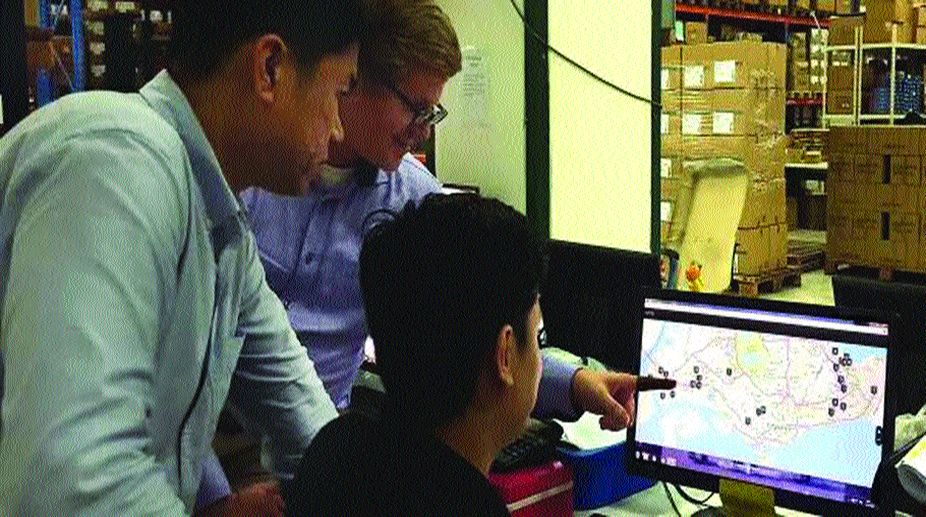The logistics industry has always been one of the most conventional sectors and a laggard in adoption of technology. With the latest advent like the Internet of Things, big data and analytics have set on a path which is soon going to not just transform but give rise to a whole new breed of paradigms.
The switch started with technologies enabling sensors and actuators to be embedded in the moving trucks, converting it into a traceable device which is always connected over wired and wireless networks using the omnipresent Internet Protocol. And the result was altogether new levels of cost optimisations, efficiency and operational control.
With IoT logistics, tracking and tracing goods becomes faster, more accurate, predictive and secure while analytics from a connected fleet can predict asset failure and schedule maintenance checks automatically. Today, trucks are becoming a mobile convergence. There is a two way connection between the driver and the dispatcher that reduces the costs and delivers greater visibility to the trucking companies.
User-generated input via smartphones and tablets can help truckers route around construction or congested areas. With each link connected to the cloud, there will be an unprecedented level of supply chain visibility. Firms have started using this technology for fuel optimisation, operational planning and allocation based on geo-spatial and status data, dynamic route management and control.
Similarly another technology that has become extremely relevant and effective is the big data and analytics. The whole sequence of transactions and processes, right from a customer creating an order, to vehicle allocation and then executing the trip, generates huge volumes of data. And this when fed to some skilfully with crafted algorithms, shows wonderful patterns and insights.
These insights not only help achieve further optimisations of cost, asset utilisation and increased efficiency but give the food for thought for some unique futuristic models. Big data and predictive analytics have a far greater role to play in saving costs and optimising operations. For instance, active use of predictive analysis may help the trucking companies to deliver their products on time during festive season sale.
The data can be generated from multiple mediums through GPS Trackers, RF sensors and mobile devices to collect this data and store it. Petabytes of data is going to be processed daily, so one needs to make sure that all the data is being crunched properly to produce useful insights which can help companies to take required actions. This is where the smart technology comes into picture. The cutting edge technology has enabled the industry players to come up with products which could help us to cater to all the legs of logistics ranging from first mile, line haul or last mile.
Optimism is the faith that leads to achievement. This industry has begun the work of implementing the required platform and technology to build the future. Building up of a modular platform where the different modules are going to act can be done which can be further combined to generate altogether new business models and revenue streams in the logistics sector.
The marketplace that is procuring the vehicles from the market, and the owned fleet having one’s own fleet of vehicles, pose their own set of challenges and opportunities. But a tech platform, that unifies both the models, provides a unique proposition of maximising the overall opportunities and minimising the challenges. It can beautifully compare various matrices in both the models vis-a-vis and propose a solution that creates the maximum value for the customer and the provider simultaneously.
The various modules of the tech platform make it easy to create offerings for different segments in logistics yet have the common loop that can be utilised to channel the demands created at one point to match the supply created at some other point. This platform can serve small and medium transporters on one side and also cater to the managed services requirements of the corporate on the other side. And then it can do the required match making, which is not that easy to achieve in the current models where the two solutions work in isolation.
It can bring together various segments, and in this process it creates a huge user base, which is the target audience for various other industries. It would give unique buying advantages to the users of this industry also. A small transporter can leverage the platform to buy accessories and spare part for his vehicle at a reduced cost bringing down his overall operational and maintenance cost.
The tech teams of the companies and start-ups are developing more interesting features like these and the future of the sector looks promising.
(The writer is chief technology officer of the Gobolt)
Advertisement











